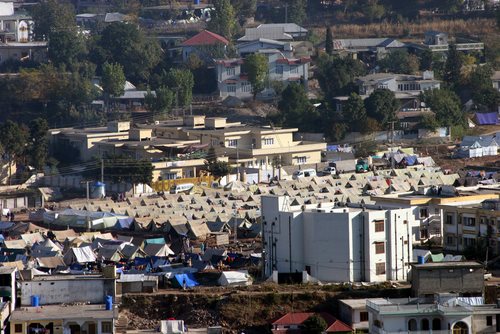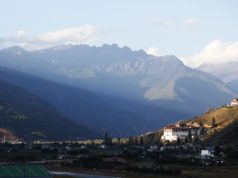
What are Refugee Camps and Why Are They Needed?
In the midst of global instability and ongoing conflicts, millions of people around the world are forced to flee their homes to seek refuge elsewhere. These individuals, known as refugees, are often forced to live in cramped, makeshift communities known as refugee camps. These camps, while temporary, can sometimes last for years and are a crucial part of the global response to displacement caused by war, persecution, and other crises. This article will explore what refugee camps are, how they work, and why they are essential.
What are Refugee Camps?
Refugee camps are communities set up to accommodate refugees and other internally displaced persons (IDPs) who are forced to flee their homes due to war, persecution, or other crises. These camps are often designed to be temporary, providing basic necessities such as food, shelter, and medical care to those who have been forced to flee.
Refugee camps can vary significantly in terms of size, location, and facilities. Some camps are large, sprawling complexes designed to accommodate tens of thousands of people. Others are small, makeshift structures that can house only a few families at a time. Regardless of their size and facilities, all refugee camps share a few common features.
First and foremost, refugee camps are designed to be safe and secure places for those who have fled their homes. They are often set up in remote or hard-to-reach locations to help protect refugees from further danger or harm. These camps are frequently fenced off or otherwise secured to prevent unauthorized entry and to ensure the safety of those inside.
Second, refugee camps are designed to provide basic necessities such as food, water, shelter, and medical care. These necessities are often provided by humanitarian organizations such as the United Nations High Commissioner for Refugees (UNHCR), which is the primary organization responsible for providing aid and assistance to refugees around the world.
Lastly, refugee camps are designed to provide a sense of community and support for those who have been forced to flee their homes. These camps often feature schools, community centers, and other communal spaces where refugees can come together and support one another.
How Do Refugee Camps Work?
The primary goal of refugee camps is to provide basic necessities and support to those who have been forced to flee their homes. To achieve this goal, refugee camps must function as self-contained communities, with a wide range of facilities and services to support the needs of those who live there.
Food, Water, and Shelter
Food, water, and shelter are the most basic needs of those living in refugee camps. In many cases, these facilities are set up by humanitarian organizations and are staffed by trained professionals. These organizations also work to ensure that basic sanitation and hygiene are maintained in all camp facilities.
In addition to providing basic necessities, refugee camps are often designed to provide a measure of safety and security for those who have fled their homes. This can involve the use of security personnel, perimeter fencing, and other measures to keep refugees safe from harm.
Education and Healthcare
Education and healthcare are essential services that must be provided to those living in refugee camps. In many cases, these services are provided by partner organizations who work to ensure that refugees receive quality education and healthcare services.
Healthcare services are typically provided by trained medical professionals who can diagnose and treat a wide range of illnesses and injuries. Education services are often provided by trained teachers who work to ensure that refugees receive a quality education and can build a better future for themselves and their families.
Community Support
Perhaps the most important aspect of refugee camps is the sense of community and support that they provide to those who have been forced to flee their homes. Many camps have community centers, schools, and other communal spaces where refugees can come together and build relationships with one another.
These spaces are often designed to be culturally appropriate and to support the needs of specific communities. For example, some camps may have specific areas designed for women and children, or for people of different religious backgrounds.
Why Are Refugee Camps Needed?
Refugee camps are needed because they provide a vital lifeline for those who have been forced to flee their homes. These individuals and families need somewhere safe to go, and they need basic necessities such as food, water, and shelter. Refugee camps provide that, along with education, healthcare, and community support.
However, it is important to note that refugee camps are not a permanent solution to the global refugee crisis. In many cases, refugees in camps live in cramped conditions with little privacy or autonomy. They may face overcrowding, limited access to education and job training, and other challenges that can limit their ability to rebuild their lives.
The ultimate goal of refugee camps is to help refugees return to their homes or find new, permanent homes elsewhere. This requires a long-term approach to address the underlying causes of displacement, such as war, persecution, and poverty.
Conclusion
Refugee camps are a crucial part of the global response to displacement caused by war, persecution, and other crises. They provide safe and secure places for those who have been forced to flee their homes, along with basic necessities such as food, water, and shelter.
However, these camps are not a permanent solution to the global refugee crisis. They must be part of a larger effort to address the underlying causes of displacement and help refugees return to their homes or find new, permanent homes elsewhere. With the ongoing crisis in the Middle East, conflicts in Africa, and other crises around the world, the need for refugee camps and other assistance remains as urgent as ever.
A refugee camp is a camp set up specifically for the housing of refugees from another country. Refugee camps are most often set up when there are large numbers of refugees fleeing a particular country and entering into another particular country.
The country to which the refugees are fleeing might not have immediate accommodations available for such a large influx of refugees, and as a result, refugee camps often spring up out of necessity. Refugee camps are often built by the United Nations or other organizations which are attempting to help refugees by providing them with some form of shelter while they either are formally processed by the nation granting asylum, or while they await the ability to return to their home nations.
Even when refugee camps are set up by such organizations, however, they are generally not safely inhabitable for an extended period of time. Refugee camps cannot generally be set up with much preparation, and thus they are only designed to provide the most basic and elementary of benefits of shelter, meaning that they are often unhygienic and even potentially dangerous if inhabited for any extended period of time.
It is instances such as these, when the refugee camps are very unsafe for their denizens, that refugee camps can become a significant issue to be dealt with for the sake of those refugees forced to live in the camps. There are some instances in the world of refugee camps which have existed for many years, or even decades, further emphasizing the potential problems of refugee camps.





















